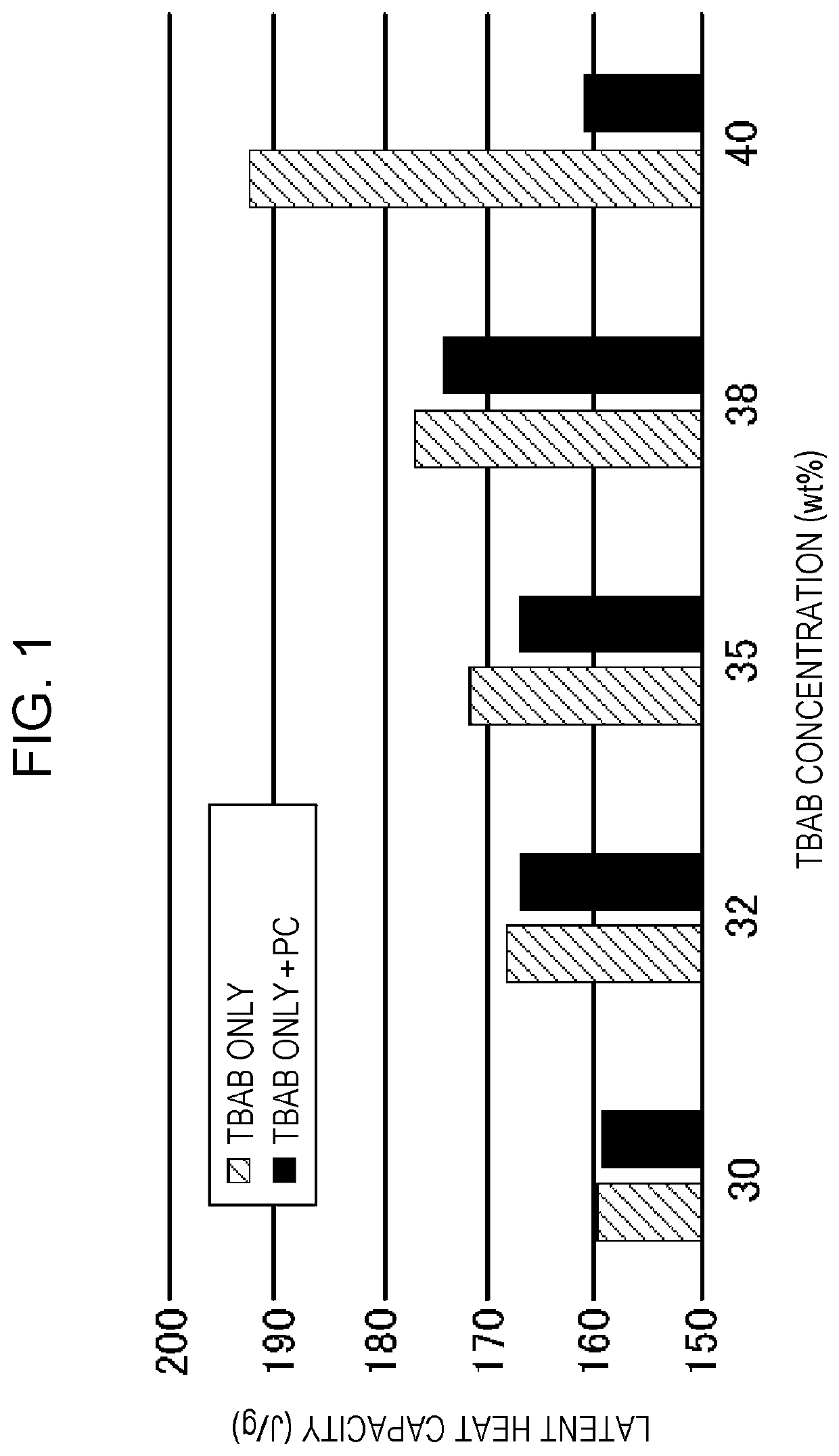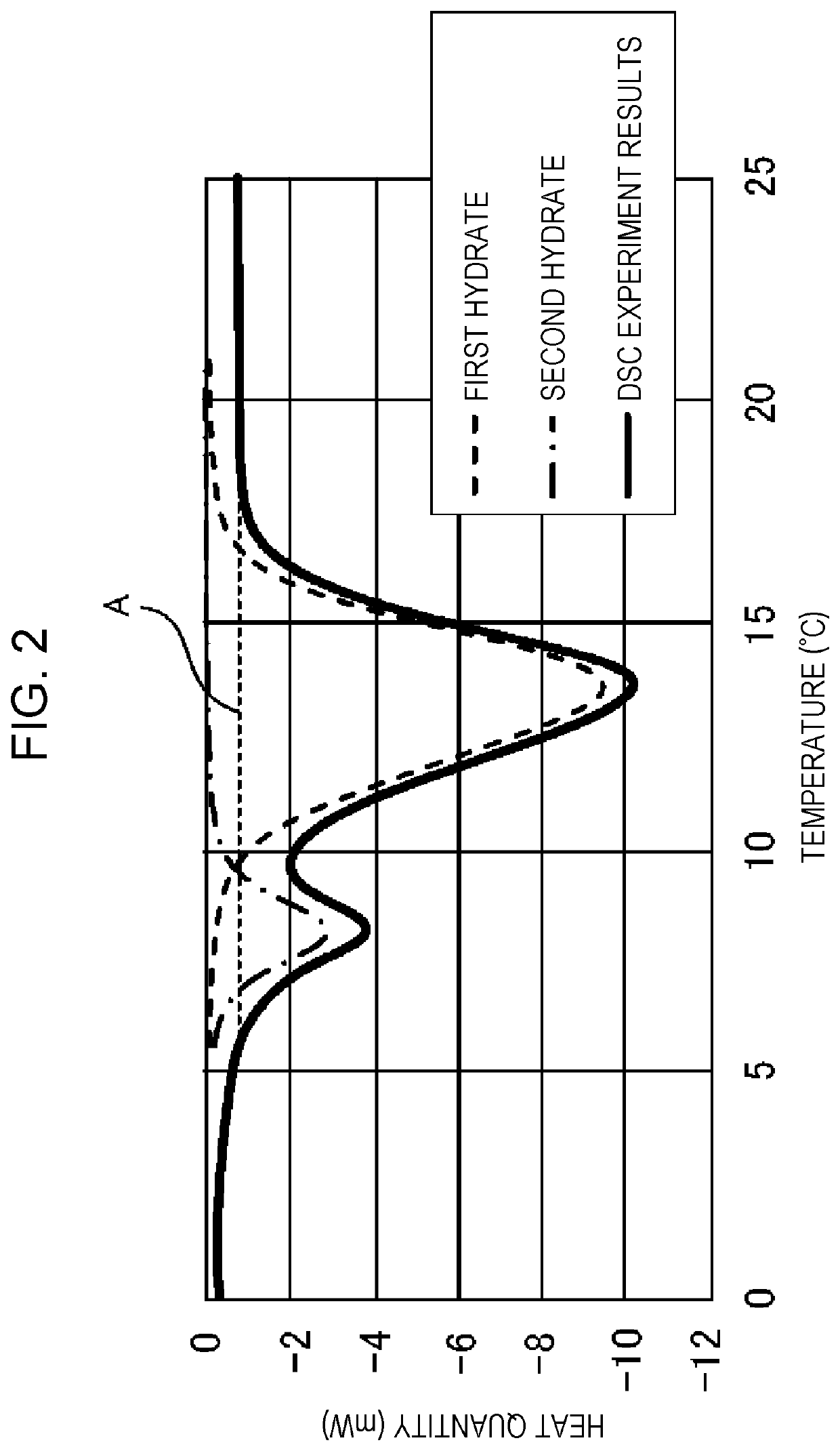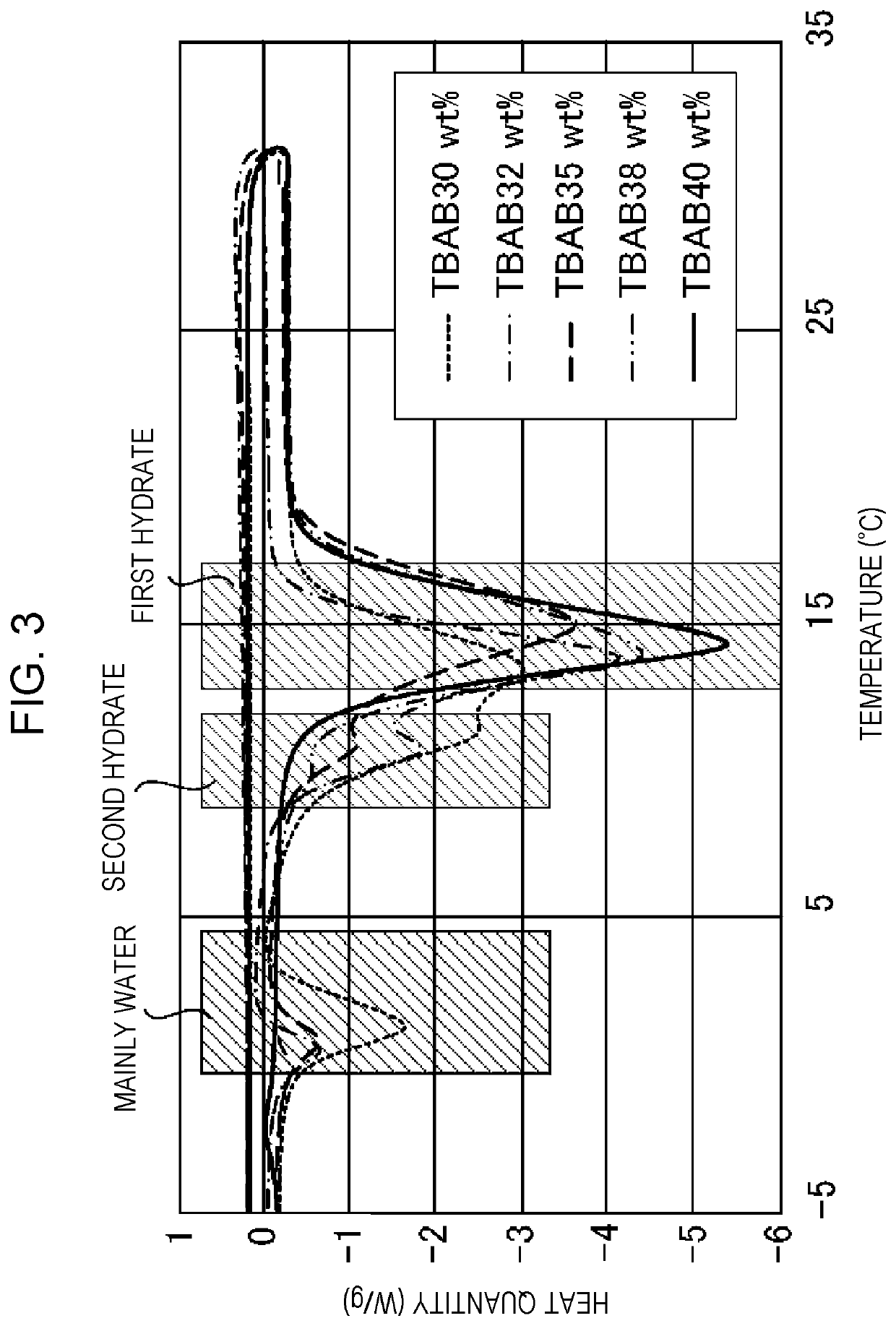Heat storage medium, cooling pack, logistics package, and cooling unit
a technology of heat storage medium and cooling pack, which is applied in the direction of domestic cooling apparatus, lighting and heating apparatus, contraceptive devices, etc., can solve the problems of difficult handling of semi-clathrate hydrate and large temperature at which latent heat is obtained, and achieve the effect of not reducing the latent heat capacity
- Summary
- Abstract
- Description
- Claims
- Application Information
AI Technical Summary
Benefits of technology
Problems solved by technology
Method used
Image
Examples
example 6
/ about Freezing at 5° C.
[0110]In the comparative examples and examples described above, freezing was confirmed at a setting of 3° C. In this event, the time taken for freezing was 18 hours. Next, samples prepared in Comparative Examples 6-7 and Examples 1-3 were set in a 5° C. compact thermostatic bath. In this operation, the time taken for complete freezing was 24 hours. Although the inside temperature of refrigerators in Japan is about 3° C., the inside of refrigerators in areas in which electric power is insufficient is kept at about 5° C. in some cases. Thus, it can be said that a sample of this embodiment can be used in areas, such as Southeast Asia, unstable in electric power.
examples 7-9
/ XRD Experiment
[0111]Next, a supercooling inhibition layer which appeared in Example 1 was taken out and was subjected to an XRD experiment. In the XRD experiment, an automated horizontal multipurpose X-ray diffractometer (SmartLab) manufactured by Rigaku Corporation or an X-ray diffractometer (RINT 2500HL: low-temperature attachment) manufactured by Rigaku Corporation was used. Since a sample was liquid at room temperature and no XRD pattern could be observed, the experiment was performed at a temperature of −30° C. in a frozen state. As comparative examples, the XRD pattern of a sample (water+phosphoric acid 30%: Comparative Example 8) prepared by dissolving 30 g of disodium hydrogen phosphate dodecahydrate in 100 g of water and the XRD pattern of water (Comparative Example 9) in a frozen state are shown.
[0112]FIG. 7 is a graph showing results of the XRD experiment. The XRD patterns of Examples 7-9 do not completely coincide with each other. This is probably because a slight amoun...
example 14
[0119]FIG. 11 is an illustration showing results obtained by measuring “pH, refractive index, and Brix value” in a “TBAB38 wt %+P2.5%+C2%” system. As shown in FIG. 11, it is clear that a first liquid layer 10 which is a separated upper layer and a second liquid layer 20 which is a lower layer both exhibit alkalinity and therefore both layers contain sodium carbonate. Furthermore, it is clear that the first liquid layer 10 and the second liquid layer 20 have different refractive indices and therefore contain different solvents.
[0120]FIG. 12 shows results obtained by subjecting each of the first liquid layer 10 and the second liquid layer 20 to a DSC experiment in TBAB38 wt %+P2.5%+C2%. As shown in FIG. 12, it is clear that the first liquid layer 10 contains a large amount of TBAB and the second liquid layer 20 contains a large amount of water. Incidentally, sodium carbonate is dissolved in both layers.
[0121][Measurement of Specific Gravity]
[0122]FIG. 13 is an illustration showing res...
PUM
| Property | Measurement | Unit |
|---|---|---|
| melting point | aaaaa | aaaaa |
| volume | aaaaa | aaaaa |
| pH | aaaaa | aaaaa |
Abstract
Description
Claims
Application Information
 Login to View More
Login to View More - R&D
- Intellectual Property
- Life Sciences
- Materials
- Tech Scout
- Unparalleled Data Quality
- Higher Quality Content
- 60% Fewer Hallucinations
Browse by: Latest US Patents, China's latest patents, Technical Efficacy Thesaurus, Application Domain, Technology Topic, Popular Technical Reports.
© 2025 PatSnap. All rights reserved.Legal|Privacy policy|Modern Slavery Act Transparency Statement|Sitemap|About US| Contact US: help@patsnap.com



